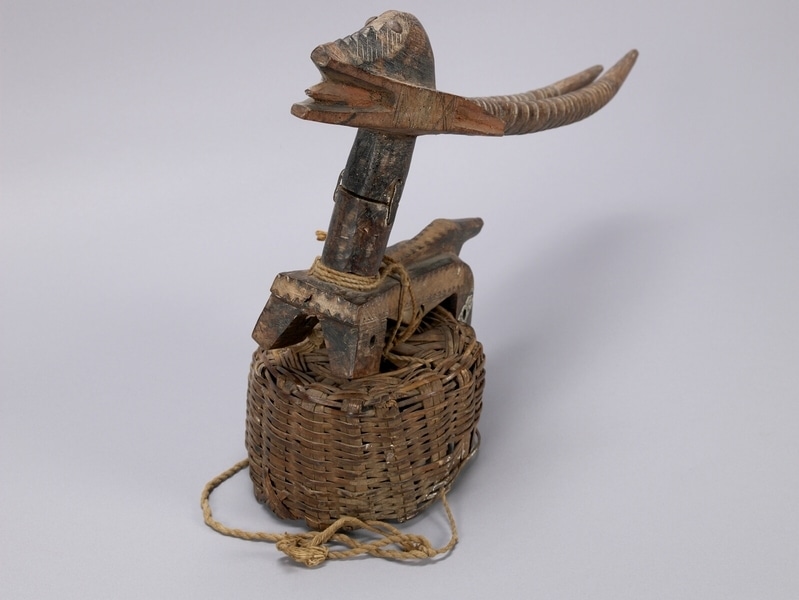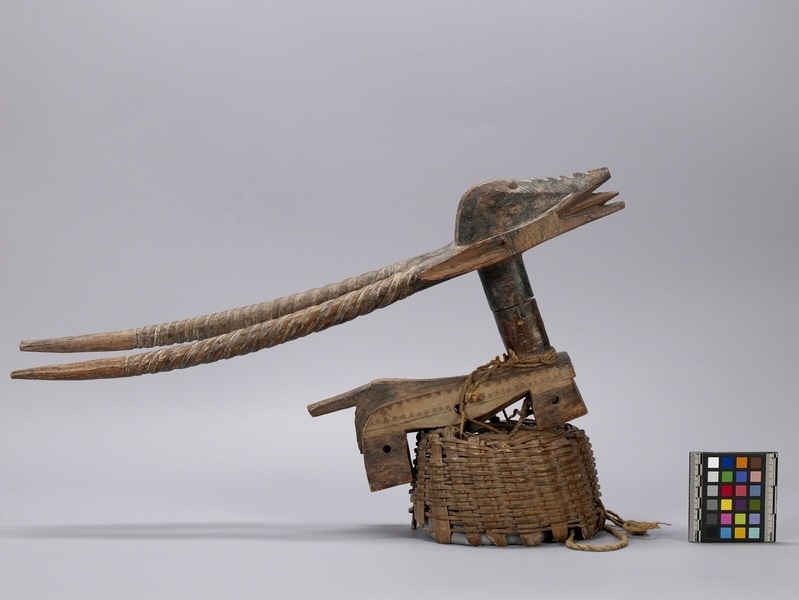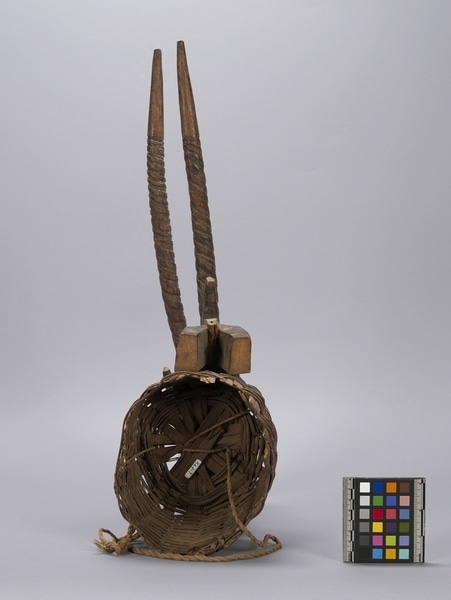Headdress Item Number: K2.217 from the MOA: University of British Columbia



Description
Woven palm fibre cap with a carved stylized antelope figure lashed to the top. Incised line patterns on face, body and horns; nails for eyes; elongated antlers.
History Of Use
Chi Wara (or Tyi Wara, etc.) headdresses are made to be danced as a pair (male and female) at harvest festivals to honour Chi Wara, a half human half antelope mythical being who taught agriculture to the ancestors of the Bamana people. The headdresses embody the ingredients necessary for successful cultivation, their long horns representing the tall growth of millet. The headdress is attached to a wicker cap, which is strapped around the chin of a dancer.
Iconographic Meaning
The headdresses are inspired by antelopes, armoured pangolins, and aardvarks. The antelope head represents the strength and grace needed to farm. The armoured pangolin's body represents protection, and the aardvark's legs represent good digging needed for farming. The male Chi Wara headdress represents the sun, while the female one represents the earth. The long horns represent the tall growth of millet. The fibre ties of the wicker cap, that the headdress would have been attached to, are associated with streams of water.
Specific Techniques
The wood is oiled and then charred in fire to deepen the colour.
What
Where
- Holding Institution
- MOA: University of British Columbia
- Made in
- Mali
Other
- Condition
- fair
- Current Location
- Case 98